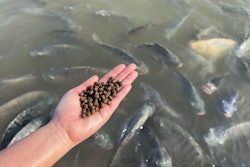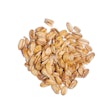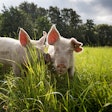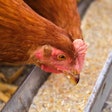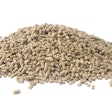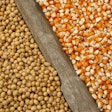
The East African state of Tanzania is one of the global leaders in the production of the fiber crop sisal.
However, extraction of the valuable fibers — mainly for rope and floor coverings — uses just 2% of the crop. This leaves 98% of the harvest as residues of limited use, according to a 2013 report from the United Nations’ Food and Agriculture Organization (FAO).
From growing the crop to the manufacture of primary and secondary products and their exports, the whole supply chain in the country is supported and regulated by the Tanzanian Sisal Board (TSB).
TSB is one of four partners in a new project to examine ways to use residues from sisal processing in animal feed, reports Daily News.
Focus of the study will be on the extraction of proteins from this underused material.
If successful, the project will help to support Tanzania’s sisal sector, whose output has been expanding in recent years.
In 2000, national production was approximately 20,500 metric tons (mt), according to the FAO report. Latest forecast for 2025-26 is more than 61,000 mt, according to government figures, approaching the agriculture ministry’s target annual figure of 80,000 mt.
Other collaborators on the research project are the Tanzania Agricultural Research Institute, the University of Dar es Salaam, and the Nelson Mandela African Institution of Science and Technology in Arusha, reports Daily News.
Among other potential uses for agricultural byproducts are the production of degradable bioplastics.
Recent developments in the Tanzanian feed sector
Last year, the authorities launched a new initiative aimed at improving the standards of the nation’s livestock and poultry feeds.
In order to boost the productivity of animal agriculture in the country, local feed producers were urged to submit feed samples to a central laboratory.
Use of corn in Tanzanian feeds is forecast to be down significantly in this marketing year (starting in July), according to a recent analysis by the U.S. Department of Agriculture (USDA) Foreign Agricultural Service (FAS).
Its forecast of 400,000 mt for 2025-26 compares with 608,000 mt for the previous 12 months. This sharp reduction is attributed to ongoing tight controls on corn imports, combined with reduced domestic production — smaller planted areas, low rainfall, disrupted supplies of certified seed and fertilizers, and pest invasions.
Furthermore, a shortage of soybeans and high prices have led local crushers to cut back soybean meal production.
As a consequence of these issues and the resulting high feed costs, FAS expects Tanzanian producers of poultry, livestock and aquaculture to cut back or even cease production this year.
With such restrictions on corn supply, the nation’s feed companies have been exploring alternative grains for their feed formulations.
A series of meetings has been held recently in Tanzania and elsewhere in East Africa by the U.S. Grains Council to promote sorghum as a nutritious and cost-effective feed ingredient.



